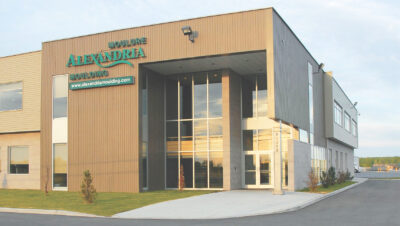Spring weather conditions were quite wet throughout most regions in late spring impacting log receipts and green production. However, according to published reports, logging activity during April was slightly better than compared to the same time last year. Demand for grade lumber and industrial products is down noted primary manufacturers. Many businesses in the Hardwood sector are still struggling with finding staff due to the pandemic. Also, operating costs have risen a great deal since COVID, as have labor costs, equipment, logging, and mostly all other operational items of a business. With these high costs, sadly, many sawmills and other shops have shut down, or stopped operation for a short period. With summer upon us, and the U.S. Fourth of July and Canada Day celebrations, the normal downtime will be felt at this time.
Ash production is currently at a reduced rate, with some mills avoiding it, however, it is meeting market demand with steady prices. Demand is weak for Aspen. Supplies are higher than market needs for most grades and thicknesses, and as such prices are down. Kiln-dried supplies are also in a similar situation, with supplies exceeding demand.
As reported for the past several months, Basswood demand is down due to loss of market share from competition of other species and products that are more readily available. This is having a downward effect on prices.
Birch sales are mixed depending on areas contacted. The demand for No. 1 Common and Better with good color is steady. Inventories are low for premium color No. 1 Common and Better kiln-dried inventory. Supplies of green production are reported to be meeting buyers’ needs.
Hard Maple continues to be selling well, noted contacts. Even though inventories were low, supplies were still sufficient to meet demand. There was a focus on Whitewoods during April and May, which eased supply pressures of these species, thus, improving Hard Maple availability for most areas.
Sawmills are maintaining supplies of Soft Maple, therefore, secondary manufacturers and concentration yards are able to stock their inventories. Prices are reported as firm. It was noted that inventories for kiln-dried No. 1 Common and Better were thin during late spring.
Some contacts commented that markets had improved for Red Oak, especially for the No. 1 Common and Better and No. 2A and Number 3A. White Oak demand continues to be strong. For some areas there is a shortage of supplies with prices moving up. Demand is also strong for kiln-dried White Oak, thus prices are rising.
Flooring manufacturers boosted their inventories for the anticipated spring and summer construction season. With the federal budget in April focusing on housing and building more homes, this provided a needed positive boost of future business to the sector. For some manufacturers they say business is better than last year. They still have concerns and issues, as do most other sectors in the Hardwood industry, such as tight supplies, finding qualified employees and their retention, and others as stated above.
The Ontario government is trying to take action to ensure the province has the tradespeople needed to build Ontario, as the demand for skilled workers in the construction and manufacturing sector is set to grow significantly over the next decade.
In May, the Ontario government introduced new policy and legislative measures to attract young people to the skilled trades, through a new apprenticeship pathway and an online job matching platform designed to promote the skilled trades to youth and workers leading to careers in these sectors.
The new stream, called Focused Apprenticeship Skills Training (FAST), will allow students in Grades 11 and 12 to participate in more apprenticeship learning through additional co-operative education credits while completing high school. Graduates would receive a new seal on their Ontario Secondary School Diploma to signify their successful completion of the program and recognize them for their dedication to learning in the skilled trades.
The Program will go back to basics ensuring students focus on learning and building skills that lead to good-paying jobs. FAST will now allow students to take up to 80 percent of their senior courses in co-op education. This will accelerate entrance into the skilled trades, supported by the mandatory requirements for all students to take at least one Technological Education course starting this September.
Ontario is also launching a new online job-matching portal for potential apprentices, journey persons and employers to network and share opportunities. Currently, Ontario does not have a dedicated provincial system to match potential apprentices with hiring employers or sponsors. A government-housed platform, developed in partnership with the private sector, would help streamline the process for potential apprentices to find interested sponsors, register and begin their training.
Also, Ontario is proposing legislative measures to reduce barriers to apprenticeship training for workers who have prior professional experience, but cannot meet certain academic entry requirements to register as an apprentice. This policy would create alternative pathways for people interested in the skilled trades as a second career if they meet alternative criteria that may include minimum years out of high school and history of prior work experiences. The proposed change sets the stage for the ministry to develop these alterative criteria which would be set out by future regulations under the Building Opportunities in the Skilled Trades Act, 2021.
These changes are part of a larger package that, if passed, would protect the health and safety of workers and frontline heroes, impose tougher penalties on exploitative bad actors and make it easier for more people to start a career in the trades. By continuing to put workers first, the government is building a brighter future for all Ontarians and ensuring the province remains the best place to live, work and raise a family.







